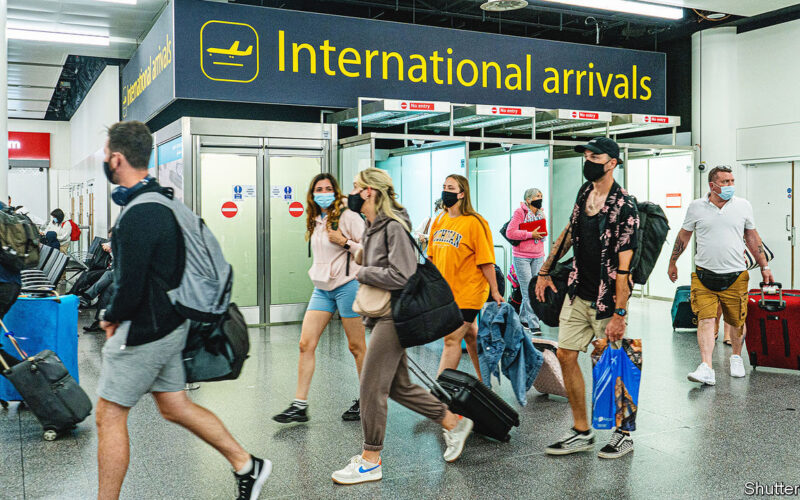Effective communication can make or break your international travel experience. Whether you’re a first-time traveler or a seasoned globetrotter, having a solid grasp of essential communication skills is crucial for smooth interactions.
From handling language barriers to mastering cultural nuances, these tips will help you navigate new environments, connect with locals, and avoid misunderstandings.
Here are the top communication tips for international travelers, practical examples, and real-world scenarios that will help make your travels smoother and more enjoyable.
15 Essential Communication Tips for International Travelers
- Learn Key Phrases in the Local Language
- Use Simple, Clear Language
- Be Aware of Non-verbal Cues
- Show Respect with Politeness
- Be Mindful of Personal Space
- Use Translation Apps Wisely
- Know When to Speak Slowly or Rephrase
- Master Active Listening
- Use Gestures Thoughtfully
- Ask for Clarification Politely
- Maintain Eye Contact (When Appropriate)
- Know Basic Local Etiquette
- Practice Patience and Flexibility
- Bring Visual Aids for Clarification
- Show Appreciation and Gratitude
Practical Communication Tips with Examples and Scenarios
1. Learn Key Phrases in the Local Language
One of the best ways to connect with locals and show respect is to learn a few key phrases in the native language. Even if you only remember “hello,” “thank you,” “please,” and “goodbye,” it can go a long way in breaking down language barriers.
- Example:
Saying “merci” in France, “arigato” in Japan, or “gracias” in Spain shows locals that you’re making an effort. - Scenario:
You’re in a local market in Thailand and want to thank a vendor. Saying “kop khun ka/kop khun krab” (thank you) will show your appreciation and likely earn you a warm smile.
2. Use Simple, Clear Language
When speaking English to non-native speakers, stick to simple words and avoid slang or idioms that could confuse others. This makes it easier for them to understand and respond.
- Example:
Instead of saying, “I’m starving,” say, “I’m very hungry.” - Scenario:
You’re asking for directions in Germany. Saying, “Can you show me where this is?” instead of “Where’s the nearest place for a bite?” will likely get you clearer directions.
3. Be Aware of Non-verbal Cues
Body language varies widely across cultures, so being mindful of how you use it is essential. Avoid hand gestures that could be misinterpreted and pay attention to others’ nonverbal cues to understand the conversation better.
- Example:
A thumbs-up is positive in many places but can be offensive in parts of the Middle East. - Scenario:
In Japan, you nod often to show understanding. Avoid excessive eye contact, as it can be considered rude.
4. Show Respect with Politeness
Respecting local customs, even if they differ greatly from your own, reflects positively on you and can make communication smoother. Start conversations with “excuse me” or “please” whenever possible.
- Example:
Use polite forms of address (like “Sir” or “Madam”) or the local equivalents. - Scenario:
In India, greeting someone with a slight head nod or saying “Namaste” before asking for directions adds a layer of respect that locals will appreciate.
5. Be Mindful of Personal Space
Personal space norms vary from culture to culture. Understanding these boundaries is essential to avoid making others feel uncomfortable.
- Example:
In some cultures, standing close to someone is acceptable, while in others, it may be considered invasive. - Scenario:
When talking to someone in the UK, stand at arm’s length, while in Latin America, closer proximity is often considered friendly and normal.
6. Use Translation Apps Wisely
Translation apps can be lifesavers in tricky communication situations. Use them for quick translations, but be mindful of limitations—direct translations aren’t always accurate.
- Example:
Use Google Translate or iTranslate for complex phrases. - Scenario:
You’re ordering in a French café. Use your app to find “Can I have…” in French, but avoid using it for whole sentences, as grammar could sound odd.
7. Know When to Speak Slowly or Rephrase
If someone doesn’t understand you the first time, rephrase the sentence instead of repeating it louder. This shows patience and flexibility, two qualities that can smooth over most misunderstandings.
- Example:
Instead of “Can I get a return ticket?” try “I need a ticket to come back.” - Scenario:
At a train station in Italy, the ticket agent doesn’t understand “round trip ticket.” By rephrasing it to “I need a ticket to go there and come back,” they quickly understand.
8. Master Active Listening
Active listening is a crucial skill when travelling. Show engagement by nodding, making small responses, and confirming understanding, especially if you’re speaking with someone in their non-native language.
- Example:
Say, “I see” or “Got it” to acknowledge what they’ve said. - Scenario:
You’re on a guided tour in Spain, listening carefully. Using small verbal acknowledgments like “Okay” or “Interesting” shows the guide you’re engaged and respectful.
9. Use Gestures Thoughtfully
While gestures can be helpful, they can also be misinterpreted across cultures. Stick to universal gestures like pointing, and avoid overly expressive hand movements unless you know they’re appropriate.
- Example:
Pointing to an item on a menu can help in restaurants. - Scenario:
You’re at a restaurant in Japan, unsure how to order. Rather than waving or snapping, you can politely point to the item or simply say “this, please” in Japanese for clarity.
10. Ask for Clarification Politely
If you’re struggling to understand, asking for clarification politely is always better than pretending to understand. Phrasing your request kindly can make the conversation smoother.
- Example:
“I’m sorry, could you say that again?” or “Could you explain that in another way?” - Scenario:
While speaking with a local in Brazil, they say something quickly, and you miss part of it. A polite “I’m sorry, could you repeat that?” shows respect and allows you to catch the full meaning.
11. Maintain Eye Contact (When Appropriate)
In some cultures, eye contact shows respect and attentiveness, while in others, it might seem confrontational. Being aware of these norms can improve your interactions.
- Example:
In the U.S. and Europe, eye contact is expected, while in Japan, direct eye contact can be too intense. - Scenario:
During a business conversation in the U.S., holding appropriate eye contact conveys confidence and helps establish rapport with your counterpart.
12. Know Basic Local Etiquette
Understanding local etiquette can save you from unintentional faux pas. This includes knowing about dining customs, greetings, and taboos.
- Example:
In India, it’s customary to greet with “Namaste” and eat with your right hand. - Scenario:
In Thailand, you learn that pointing your feet at someone is disrespectful. So, you sit with your feet pointed downwards to avoid causing offence.
13. Practice Patience and Flexibility
Travelling often involves language delays and unexpected challenges. Embracing a patient and flexible attitude will help ease frustrations and make communication more pleasant.
- Example:
If someone doesn’t understand, take a breath before rephrasing rather than showing impatience. - Scenario:
At a busy restaurant in Spain, the waiter may need a moment to attend to your request. Exercising patience ensures you’re treated with the same respect.
14. Bring Visual Aids for Clarification
Images, maps, and even business cards can be handy when language barriers are high. Visual aids offer clarity that words sometimes can’t provide.
- Example:
Show a map on your phone to ask for directions or point to an image on a menu. - Scenario:
You’re looking for a landmark in Turkey. Showing a picture of it on your phone to locals gives them a clear idea of where you want to go, even if you can’t say it in Turkish.
15. Show Appreciation and Gratitude
Expressing gratitude can transform a basic exchange into a positive experience. Simple “thank yous” and friendly gestures show that you value the other person’s time and effort.
- Example:
A “thank you” and a smile in any language go a long way. - Scenario:
After receiving directions in Italy, you say “grazie” with a smile, showing respect and appreciation, which often makes locals more inclined to help.
Conclusion
Mastering these 15 Essential Communication Tips for International Travelers will enhance your travel experiences and help you connect more genuinely with people around the world.
Communication is about more than words; it’s about understanding cultural contexts, showing patience, and expressing respect. With these strategies, you’re well-equipped to navigate new places confidently, and create meaningful relationships.







